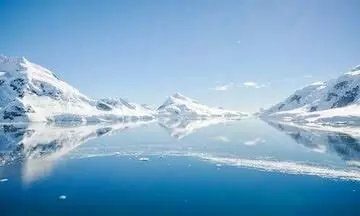
Antarctica was once ice-free: the climate shift that transformed the continent
text_fieldsAround 34 million years ago, during the Eocene-Oligocene transition, Antarctica was not the icy landscape we know today.
Instead, it was covered with tundra and coniferous forests, resembling northern Canada. The shift that turned this once ice-free land into a frozen continent was driven by a combination of falling carbon dioxide (CO2) levels and tectonic movements.
According to paleoclimatologist Eric Wolff from the University of Cambridge, a significant decrease in CO2 levels was a key factor in Antarctica’s transformation. Geochemist Tina van de Flierdt from Imperial College London highlights that CO2 levels were much higher 50 million years ago, ranging between 1,000 and 2,000 parts per million.
As these levels dropped, global temperatures decreased, enabling the formation of the ice sheets that now dominate Antarctica.
Alongside the CO2 decline, tectonic activity played a pivotal role in Antarctica's cooling.
The separation of South America from Antarctica opened the Drake Passage, which allowed the formation of the Antarctic Circumpolar Current. This powerful ocean current isolated Antarctica, cutting off warm air and ocean currents from reaching the continent, and contributed to its deep freeze.
To understand when ice began to form on Antarctica, scientists analyze oxygen isotopes found in marine sediments. By studying the ratios of oxygen-16 to oxygen-18, researchers can determine the timeline of ice sheet development, shedding light on the climate changes that occurred millions of years ago.
While van de Flierdt cautions that a complete melting of Antarctica’s ice is unlikely, she emphasizes the need to address the current ice loss driven by human-induced climate change. Limiting further ice melt is crucial to preserving the continent’s stability.























